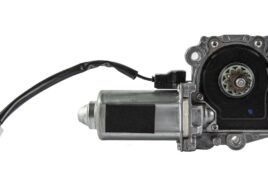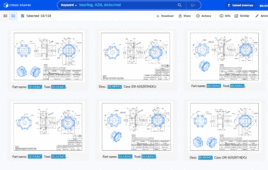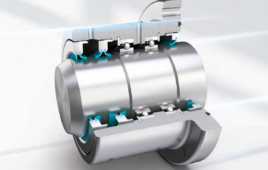Valencia, SPAIN – Heavy toiling under sunny Spanish skies: Grinders Brian MacInnes and Craig Monk are once again completely in their element. With 110 kilograms each, they are anything but lightweights in the BMW ORACLE Racing Team. With brute strength, they are turning the so-called “coffee grinders” – cranks via which the heavy weight of the sails are transferred – with up to a six-tone impact on the 215 square meter main sail. Set sails, trim, and release. In a match race, when it comes to gaining a few meters lead over the contestant, fast turns are critical and the grinders have to meet extreme physical challenges. The material is also subjected to enormous stress and strain. In the “Formula 1 of Sailing”, ceramics are now allowing for more efficient maneuvers.

BMW ORACLE Racing
“In the America’s Cup, we benefit from the know-how of BMW and the experiences with the ceramic material,” says Ian Burns, design coordinator at BMW ORACLE Racing. Thomas Hahn, a BMW engineer on the US-American America’s Cup challenger design team, adds: “In Formula 1, ceramics – on the wheel suspension, for example, – is already a standard item. Now competitive sailing can benefit from the technical know-how of the BMW Sauber F1 Team.”

The BMW Sauber F1.07
If conventional floating bearings are used on the blocks, an additional weight of 1,500 kilograms would have to be applied to the running backstays to set the sheet actually in motion. With ceramic bearings, the friction within the guide pulleys can be reduced by 90 percent to a mere 150 kilograms. Aside from less friction, other properties speak in favor of the use of ceramic bearings: less weight, high rigidity, less wear and tear, and the ability to render reliable services, even under the most extreme temperature and weather conditions. In the case of high rotary speeds, the heat of the guide pulleys on top of the mast is significantly reduced – for example, when the BMW ORACLE Racing crew has to set the spinnaker at the top mark. In standard bearings, the extreme heat could cause the pulley to jam.
The technical experts at BMW have learned to appreciate the impressive properties of the inorganic, non-metallic ceramics in Formula 1. Extremely high weights severely strain the wheel hubs of the BMW Sauber F1 Team bolides – special designed ceramic bearings also prevent jamming and excessive generation of heat.

CEROBEAR hybrid rolling bearings as wheel bearings
Ceramic bearings are used on the high-tech yachts USA 87 and USA 98 in spots where joints and connections are subject to extreme strain during the hot duels. Another example of this is the mainsheet system with which the mainsail is being trimmed. In this case, two grinders have to move weights of up to six tones with the fastest possible speed.
Extremely hard, durable, low in friction, and lightweight – the positive properties of ceramics can be complemented by another bonus point: less maintenance. If conventional bearings come into contact with aggressive salt spray water, they have to be carefully cleaned and maintained with lubricants within a short period of time. This does not apply to ceramic bearings. Pure, clean water is all that is needed to clean such bearings, because even the saltiest water cannot stop ceramics from “rolling on.”
Exclusive development partner is CEROBEAR, Herzogenrath (Germany). CEROBEAR is the worldwide leading manufacturer of ceramic rolling bearings. Elmar Bergrath, product manager, CEROBEAR: “The diverse expectations and requirements with regards to our bearings in the America’s Cup and the close cooperation with the entire team present us with the opportunity to impressively display the special characteristics of ceramic bearings under the most extreme atmospheric conditions.”
BMW Sauber F1 Team
:: Design World ::
Filed Under: Bearings, Automotive, MECHANICAL POWER TRANSMISSION





Tell Us What You Think!